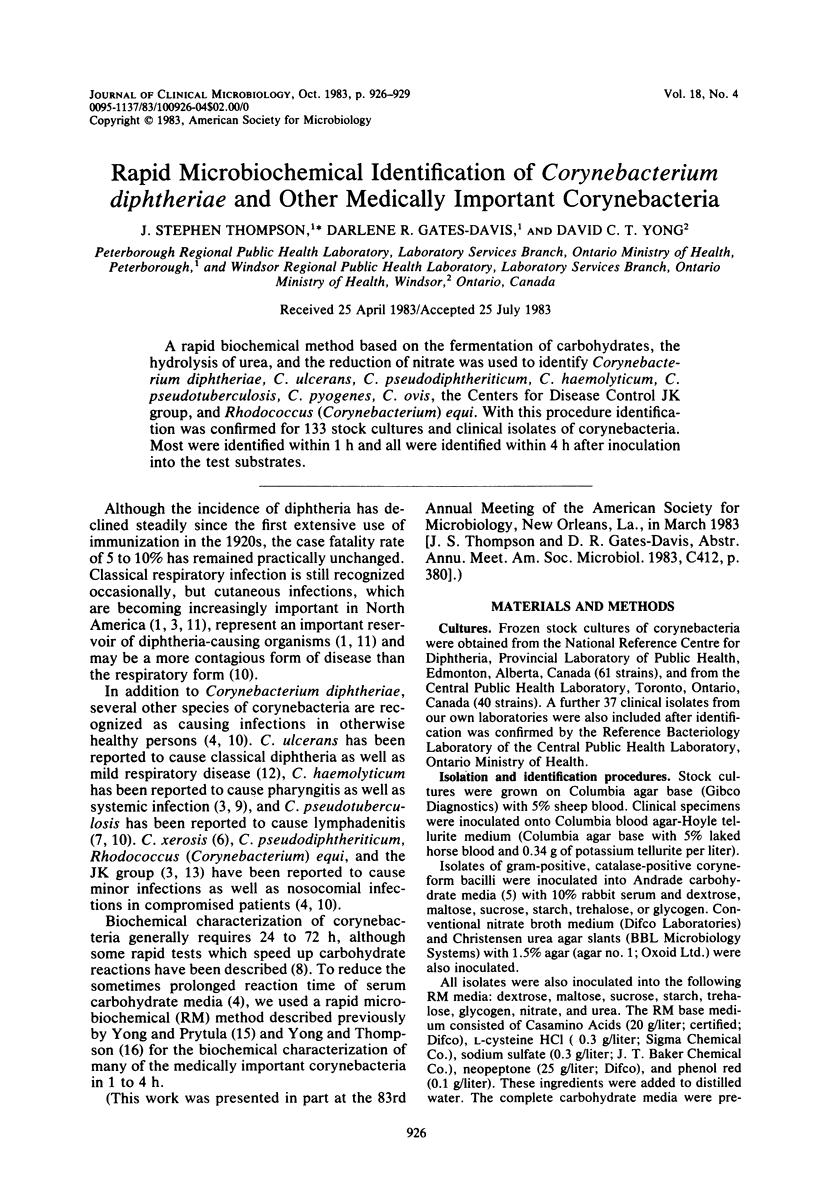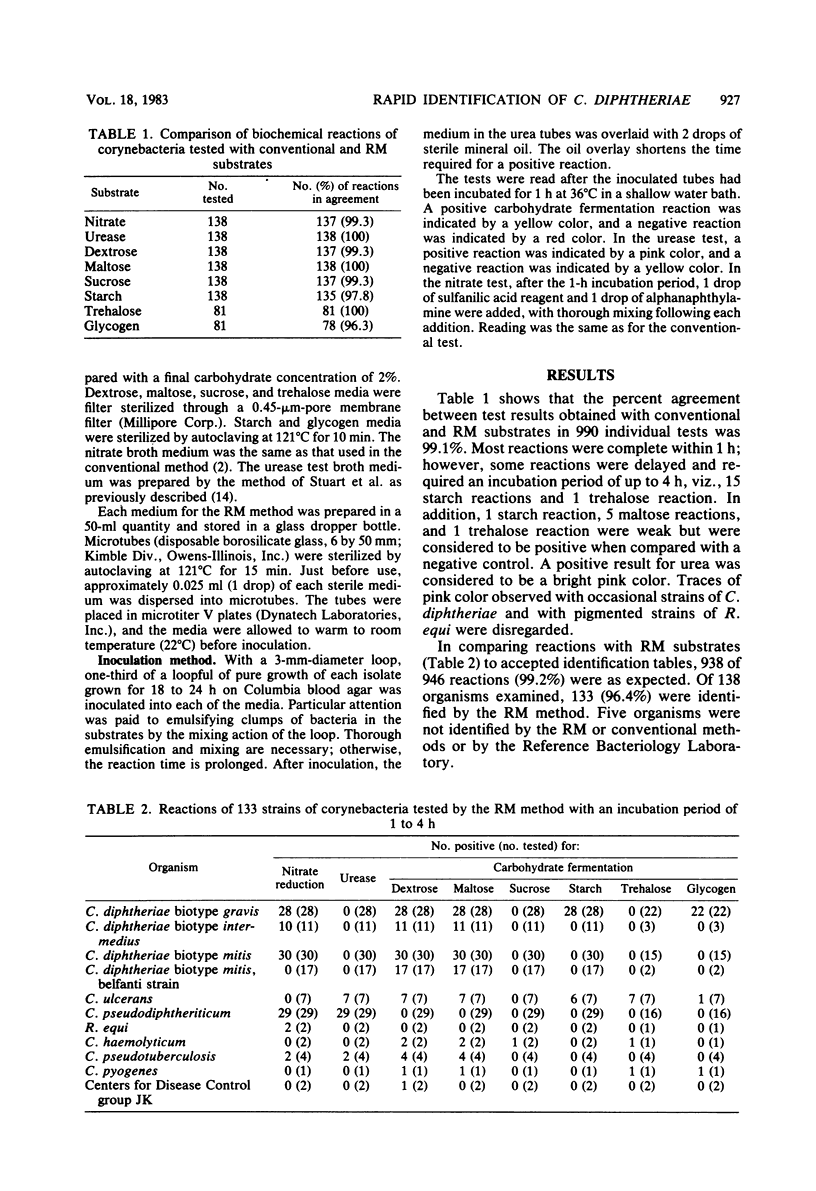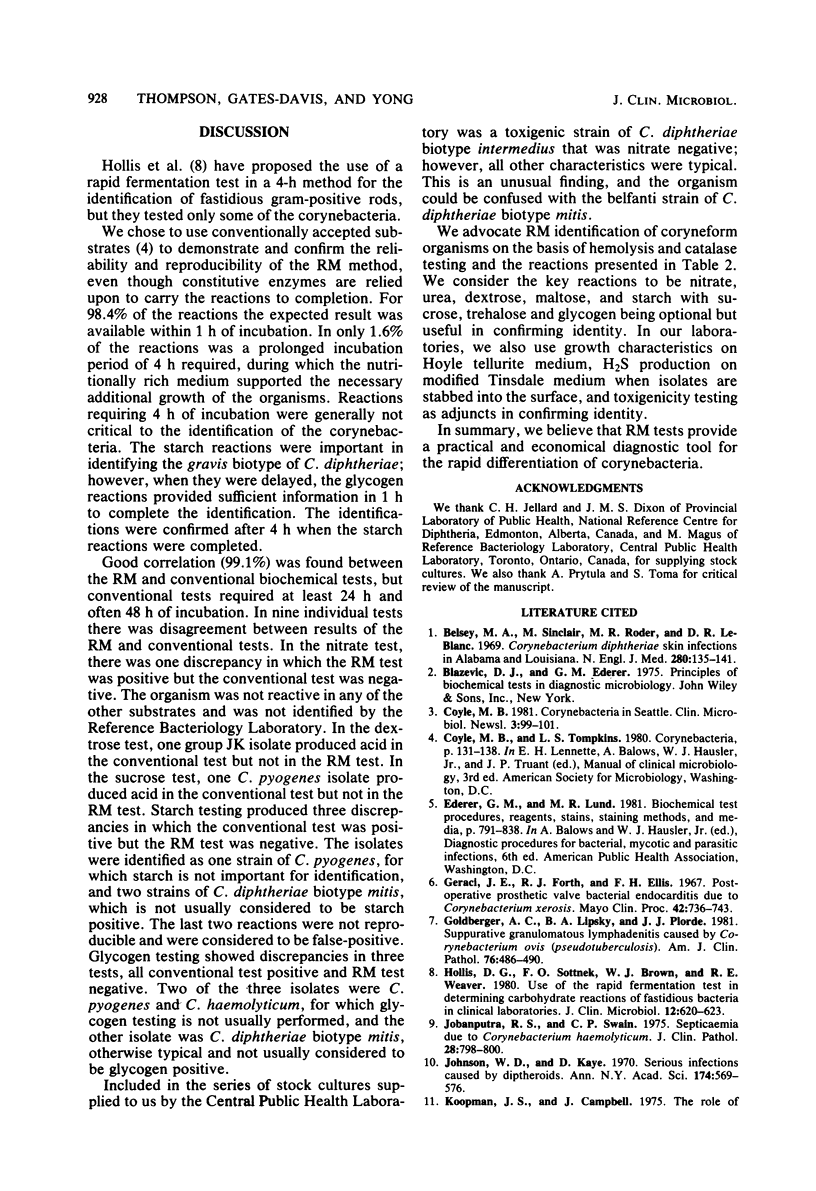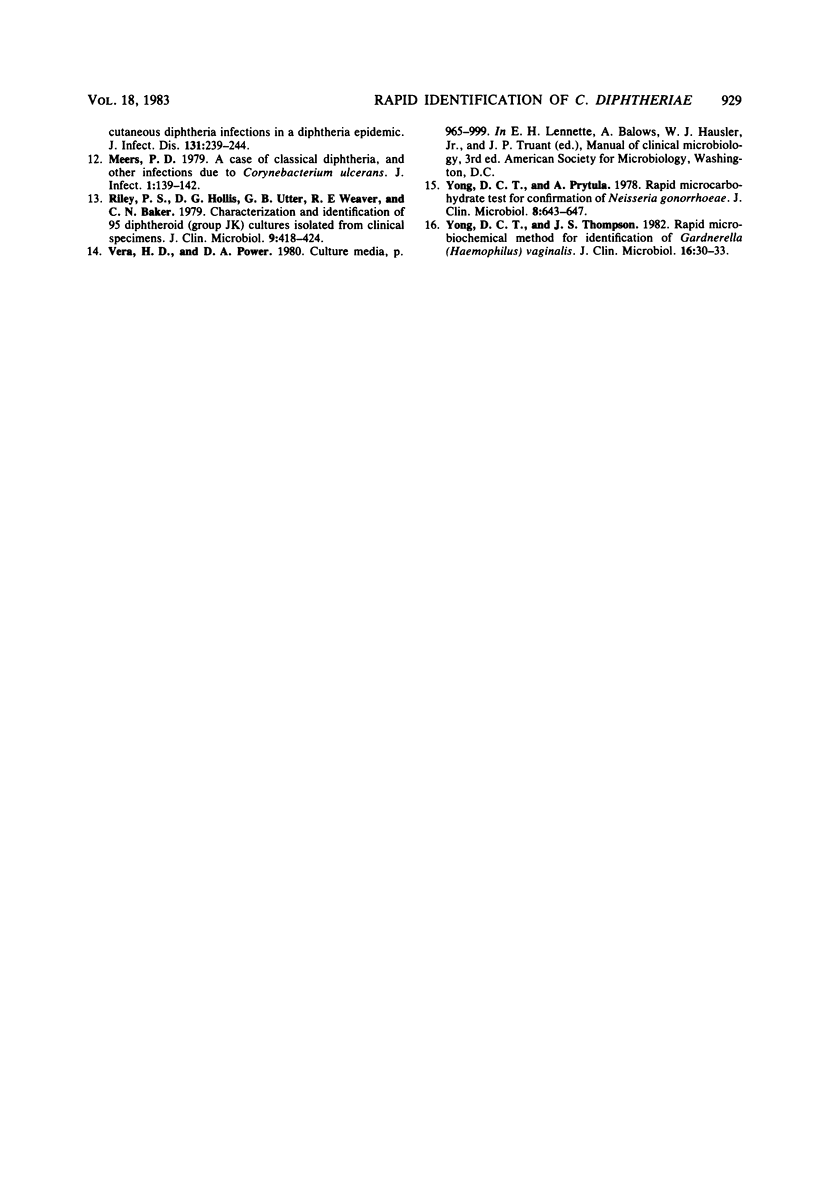Abstract
A rapid biochemical method based on the fermentation of carbohydrates, the hydrolysis of urea, and the reduction of nitrate was used to identify Corynebacterium diphtheriae, C. ulcerans, C. pseudodiphtheriticum, C. haemolyticum, C. pseudotuberculosis, C. pyogenes, C. ovis, the Centers for Disease Control JK group, and Rhodococcus (Corynebacterium) equi. With this procedure identification was confirmed for 133 stock cultures and clinical isolates of corynebacteria. Most were identified within 1 h and all were identified within 4 h after inoculation into the test substrates.
Full text
PDF



Selected References
These references are in PubMed. This may not be the complete list of references from this article.
- Belsey M. A., Sinclair M., Roder M. R., LeBlanc D. R. Corynebacterium diphtheriae skin infections in Alabama and Louisiana. A factor in the epidemiology of diphtheria. N Engl J Med. 1969 Jan 16;280(3):135–141. doi: 10.1056/NEJM196901162800304. [DOI] [PubMed] [Google Scholar]
- Geraci J. E., Forth R. J., Ellis F. H., Jr Postoperative prosthetic valve bacterial endocarditis due to Corynebacterium xerosis. Mayo Clin Proc. 1967 Nov;42(11):736–743. [PubMed] [Google Scholar]
- Goldberger A. C., Lipsky B. A., Plorde J. J. Suppurative granulomatous lymphadenitis caused by corynebacterium ovis (pseudotuberculosis). Am J Clin Pathol. 1981 Oct;76(4):486–490. doi: 10.1093/ajcp/76.4.486. [DOI] [PubMed] [Google Scholar]
- Hollis D. G., Sottnek F. O., Brown W. J., Weaver R. E. Use of the rapid fermentation test in determining carbohydrate reactions of fastidious bacteria in clinical laboratories. J Clin Microbiol. 1980 Oct;12(4):620–623. doi: 10.1128/jcm.12.4.620-623.1980. [DOI] [PMC free article] [PubMed] [Google Scholar]
- Jobanputra R. S., Swain C. P. Septicaemia due to Corynebacterium haemolyticum. J Clin Pathol. 1975 Oct;28(10):798–800. doi: 10.1136/jcp.28.10.798. [DOI] [PMC free article] [PubMed] [Google Scholar]
- Johnson W. D., Kaye D. Serious infections caused by diphtheroids. Ann N Y Acad Sci. 1970 Oct 30;174(2):568–576. doi: 10.1111/j.1749-6632.1970.tb45582.x. [DOI] [PubMed] [Google Scholar]
- Koopman J. S., Campbell J. The role of cutaneous diphtheria infections in a diphtheria epidemic. J Infect Dis. 1975 Mar;131(3):239–244. doi: 10.1093/infdis/131.3.239. [DOI] [PubMed] [Google Scholar]
- Riley P. S., Hollis D. G., Utter G. B., Weaver R. E., Baker C. N. Characterization and identification of 95 diphtheroid (group JK) cultures isolated from clinical specimens. J Clin Microbiol. 1979 Mar;9(3):418–424. doi: 10.1128/jcm.9.3.418-424.1979. [DOI] [PMC free article] [PubMed] [Google Scholar]
- Yong D. C., Prytula A. Rapid micro-carbohydrate test for confirmation of Neisseria gonorrhoeae. J Clin Microbiol. 1978 Dec;8(6):643–647. doi: 10.1128/jcm.8.6.643-647.1978. [DOI] [PMC free article] [PubMed] [Google Scholar]
- Yong D. C., Thompson J. S. Rapid microbiochemical method for identification of Gardnerella (Haemophilus) vaginalis. J Clin Microbiol. 1982 Jul;16(1):30–33. doi: 10.1128/jcm.16.1.30-33.1982. [DOI] [PMC free article] [PubMed] [Google Scholar]


